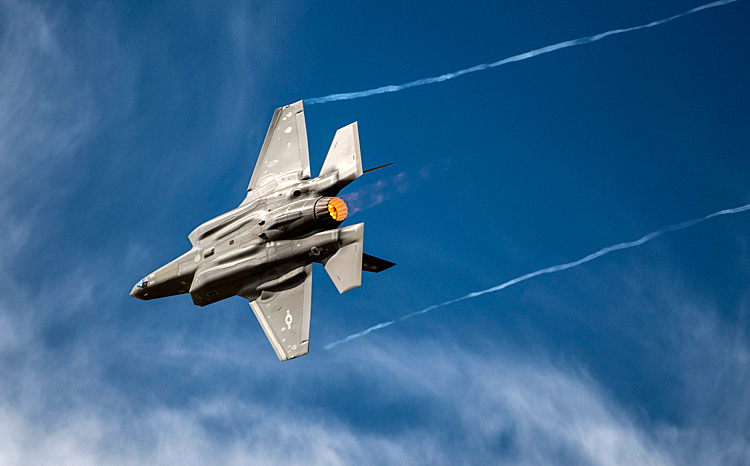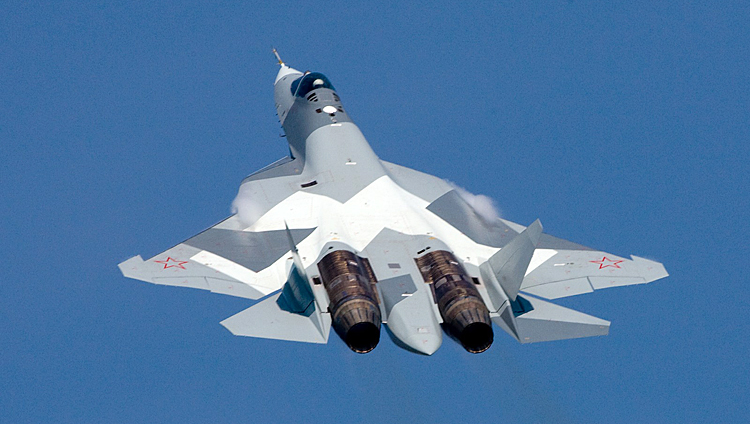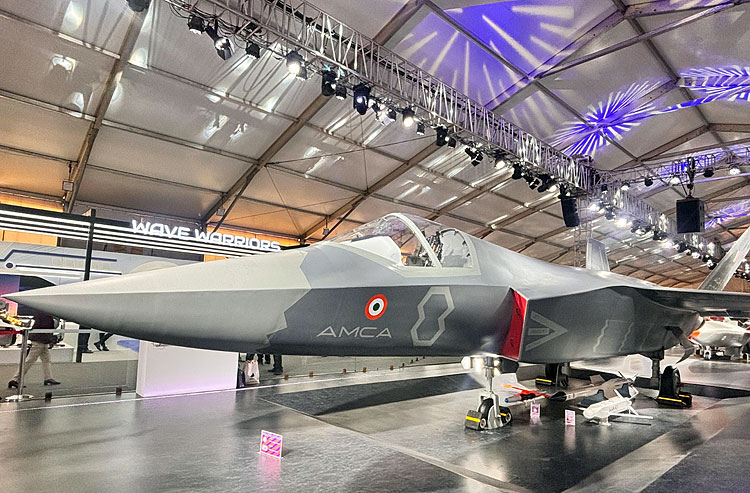INDIAN ARMED FORCES CHIEFS ON OUR RELENTLESS AND FOCUSED PUBLISHING EFFORTS

The insightful articles, inspiring narrations and analytical perspectives presented by the Editorial Team, establish an alluring connect with the reader. My compliments and best wishes to SP Guide Publications.

"Over the past 60 years, the growth of SP Guide Publications has mirrored the rising stature of Indian Navy. Its well-researched and informative magazines on Defence and Aerospace sector have served to shape an educated opinion of our military personnel, policy makers and the public alike. I wish SP's Publication team continued success, fair winds and following seas in all future endeavour!"

Since, its inception in 1964, SP Guide Publications has consistently demonstrated commitment to high-quality journalism in the aerospace and defence sectors, earning a well-deserved reputation as Asia's largest media house in this domain. I wish SP Guide Publications continued success in its pursuit of excellence.
- Prime Minister Modi Visits Punjab’s Adampur Air Base, Interacts with Airmen after Successful ‘Operation Sindoor’; Stern Message to Pakistan
- The layered Air Defence systems that worked superbly, the key element of Operation Sindoor
- Operation Sindoor | Day 2 DGMOs Briefing
- Operation Sindoor: India strikes back with Precision and Purpose
- Operation Sindoor: Resolute yet Restrained
- India’s Operation Sindoor Sends a Clear Message to Terror and the World – ‘ZERO TOLERANCE’
- Japan and India set forth a defence cooperation consultancy framework, talks on tank and jet engines
- Terrorist Attack in Pahalgam in Kashmir: Unfolding a long surgical war against PAK
- Lt General Pratik Sharma takes over Command of Indian Army's Northern Command
IAF to address squadron gaps, interim solution to acquire fifth-generation Jets
It is widely noted that the IAF needs to urgently plug a growing capability gap as the thrust comes amid thinning squadron strength. Could there be an interim solution to fill the void?

The Indian Air Force (IAF) has formally recommended acquiring two to three squadrons (roughly 40–60 aircraft) of fifth-generation stealth fighters.
It is widely noted that the IAF needs to urgently plug a growing capability gap as the thrust comes amid thinning squadron strength (projected to fall to 29 by October 2025, versus an authorised 42.5) and a rapidly advancing adversary in the region. This comes in the background of the final batch of ageing MiG-21s, which is set to retire by September, leading to an acute shortfall.
The Indian Air Force (IAF) has formally recommended acquiring two to three squadrons (roughly 40–60 aircraft) of fifth-generation stealth fighters.
To address such an anomaly, a high-level panel led by the Defence Secretary in looking into and evaluating various possibilities. For stopgap arrangements, certain reports point out the two stealth offerings – F-35 from the US, and Su-57 from Russia. F-35 is the only fifth-generation operational fighter that is widely used by the US and its allies. Russia's Su-57 is an advanced fighter jet with many features of fifth-generation elements.

The United States has pitched its F-35 stealth fighter, widely deployed by its allies across the globe. Russia, on the other hand, has proposed its Su-57 jet. Both aircraft are classified as fifth-generation platforms. However, the foreign route is already in discussion under the MRFA programme for 114 jets with a 'Make in India' component.
Project status & institutional oversight: Squadrons under strain
Approved by the Cabinet Committee on Security (CCS) in March 2024 with a ₹15,000+ crore budget, the Advanced Medium Combat Aircraft (AMCA) is India's flagbearer for indigenous fifth-generation capability.
A special committee chaired by Defence Secretary Rajesh Kumar Singh—including IAF Vice Chief, Defence Research and Development Organisation (DRDO), ADA, and Defence Production officials—has been convened to craft a production cum business model framing a fast-track path. The committee aims to shrink development timelines, boost private sector participation, and explore foreign engine collaboration.
It is widely noted that the IAF needs to urgently plug a growing capability gap as the thrust comes amid thinning squadron strength (projected to fall to 29 by October 2025, versus an authorised 42.5) and a rapidly advancing adversary in the region.
As of now, the time line looks like - Design work concluded in 2023. Five prototypes are planned, with rollout starting in late 2026 to early 2027. The first flight is expected by 2028–29, certification by 2032, and IAF induction by 2034–35.

At the same time, MoD's AMCA execution model, cleared in May 2025, has shifted from a HAL-led SPV to a public-private partnership (PPP). The roadmap for AMCA will have Indian private entities-individually or in joint ventures, to lead development and production.
Delays in Tejas Weaponisation & Production
A parliamentary panel in late 2024 highlighted that IAF needed 42 squadrons but had only 31 operational—citing delivery delays of 83 Tejas Mk1A jets from HAL, which had not been delivered on schedule. IAF Chief Air Marshal A.P. Singh has repeatedly criticised HAL over slow Tejas deliveries and urged urgency in weaponisation and integration, especially in light of China's military consolidation.
Approved by the Cabinet Committee on Security (CCS) in March 2024 with a ₹15,000+ crore budget, the Advanced Medium Combat Aircraft (AMCA) is India's flagbearer for indigenous fifth-generation capability.
The upgraded Tejas Mk2, with 11 weapon stations and a fully indigenous weapons loadout, is under development. The prototype's wings and fuselage are nearing completion, but the rollout timeline will see extension due to issues like engine delays, among others. Overall, the situation demands an urgency to fill the gaps while the indigenous fighters' development is underway.
Defence Secretary Committee & Capability Roadmap
In early 2025, the Empowered Committee for Capability Enhancement, chaired by the Defence Secretary, submitted recommendations to boost IAF's light combat aircraft production and integrate the private sector into defence aerospace roles.
The committee's recommendation was not only based on the IAF's perspective plan, but also the immediate threats and counter-attack strategy, which is all about operational readiness.
China's rapid PLAAF (PLA Air Force) advances
China has already deployed its Chengdu J-20 fifth-generation stealth fighters at airbases such as Hotan and Shigatze, directly facing India's border regions.
China has already deployed its Chengdu J-20 fifth-generation stealth fighters at airbases such as Hotan and Shigatze, directly facing India's border regions.
In December 2024, Chinese authorities unveiled what are believed to be two prototype sixth-generation stealth fighters from Chengdu and Shenyang—remarkable for their tailless design and AI-driven features. This startled global defence observers.

Inducted in 2017, the Chengdu J-20 now numbers around 200–300 operational jets, armed with PL 15 long-range missiles and positioned near the LAC. Using stealth, super cruise, and networked warfare, it provides China with significant air dominance.
Pakistan's J 35 / FC 31 acquisition plans
Pakistan has expressed intent to procure 30–40 Chinese Shenyang J 35A (export variant of FC 31). Pilot training began in China around mid 2025, with initial deliveries expected by 2026—but these were later downplayed by Pakistan's defence minister as speculative media reporting.
Pakistan continues to operate J 10CE and JF 17 Block III fighters, many armed with PL 15E active radar guided missiles.
Strategic implications & outlook
India today is at a critical inflexion point! IAF shortages and competitor advancements have spurred urgent upgrade in airborne capability. The Defence Ministry is actively exploring short-term foreign procurement to bridge the gap, while simultaneously accelerating indigenous platforms like Tejas Mk2 and AMCA with the aid of new institutional reforms.
Yet challenges remain—from HAL's delivery delays to compressed timelines needed to match China's sixth-generation ambitions and Pakistan's acquisition of advanced Chinese fighters. Achieving technological self-reliance, bolstering squadron strength, and implementing strategic modernisation under strict deadlines will define the IAF's future posture—and India's regional deterrence calculus.
Manish Kumar Jha is a Consulting & Contributing Editor for SP's Aviation, SP's Land Forces and SP's Naval Forces and a security expert. He writes on national security, military technology, strategic affairs & policies.





